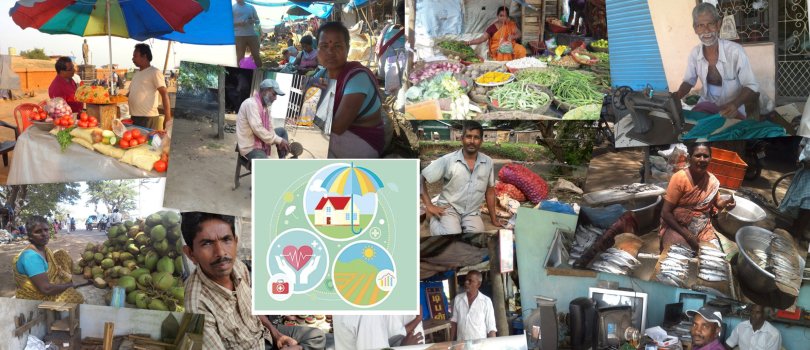 23-10-2020
23-10-2020
Let a 1000 Microinsurers Bloom – A Welcome Initiative by IRDAI

 Insurance Alertss
Insurance AlertssLet a 1000 Microinsurers Bloom – A Welcome Initiative by IRDAI
Microinsurance initially caught the eye of insurance industry as a way of meeting its rural and social sector obligations, though eventually microinsurance came into its own with the Insurance Regulatory and Development Authority of India (IRDAI) noticing its relevance and potential.
IRDAI therefore came up with periodic guidelines specifically aimed at promoting and streamlining microinsurance activities. The pioneering work done by non-governmental organisations (NGOs), self-help groups (SHGs) and microfinance institutions (MFIs) highlighted the need for a specifically designed regulatory architecture to address the unique challenges faced by this sector.
A major challenge was product design, pricing and distribution. The operating model, cost structure and compliance framework of traditional insurance companies gets in the way of accommodating the specific needs of microinsurance sector. It was felt that a specialised microinsurance company will be better equipped to provide the solutions for the microinsurance needs of the populace.
However, forming a microinsurance company was not economically viable within the obtaining regulatory provisions governing classification and capitalisation of insurance companies. For example, current regulations allow only three types of insurance companies: life, general and health. It has no provision for a composite insurance company, that is, a company which can do both life and non-life business. The minimum capital mandated for life and non-life companies is Rs100 crore each and that for health, Rs50 crore.
Regulations relating to product design, distribution, technology platform and corporate governance present another area of challenges for starting a specialised microinsurance company. IRDAI therefore constituted a committee in February this year, tasked to come up with solutions that will enable formation of a microinsurance company. This committee was headed by Mirai Chatterjee, chairperson of SEWA. SEWA’s credentials in the field of self-help economic activity need no introduction. This committee also had on board such financial sector thought leaders as Nachiket Mor and other senior domain experts.
The committee submitted its report to IRDAI in August 2020, a remarkable achievement considering the constraints imposed by the pandemic. The report is available on IRDAI website and makes for reassuring and encouraging reading and recommends a framework which is likely to prove path breaking. A noteworthy outcome is that the committee recommends allowing formation of composite microinsurance companies which can do both life and non-life business. An equally significant recommendation is that it lowers the minimum capital requirements for a microinsurance company to Rs20 crore, which is a great enabler for those who wish to provide limited products and/or want to restrict their activities to a limited geographical region.
The third and possibly the most transformational outcome, which compliments the first two, is the recommendation to allow microinsurance companies to be set up as ‘mutuals’ or co-operatives. Readers might recollect that Moneylife had recently carried a piece recommending setting up of mutual insurance companies by SHGs and NGOs. This was perhaps sheer serendipity but as the saying goes, nothing succeeds like an idea whose time has come!
While the prevailing narrative stresses on ‘unlimited opportunities’ for insurance in the country, the fact remains that insurance rides on the back of economic growth. With the slowing down of the economy, the double-digit growth seen in the past is unlikely to replicate itself soon – only health insurance has emerged as the saviour of non-life industry during the current downturn. There is no dearth of opportunity as such, but it lies in the underexplored area of lower income groups, whose protection needs are different and at the same time rather limited by their capacity to pay. In essence, they need bite sized products, simple and attractively priced. Their awareness levels are a big barrier to marketing the products. These buyer demographics are therefore only accessible through microfinance institutions (MFIs), SHGS and NGOs, which also perform the useful function of microinsurance channels.
The products currently sold through microinsurance channels are health, accident, life and to some extent, property. The ticket size is relatively small and therefore it is unattractive for the mainstream providers to invest time and resources in expanding the market. Claims are also handled along the established protocols, which increases servicing costs. Microinsurance companies will have the ability and the incentive to devise tailored coverage and simplified claims solutions for their target customer. An additional advantage is that currently this market is accessed and serviced through MFIs and SHGs, who would be the best placed to design tailored products, price them correctly and cut the distribution overhang since they already ‘know their customer’.
This report also takes into account two major challenges, technology and distribution. Currently, a good technology platform can cost up to Rs100 crore for an insurance company from design to implementation and its ongoing cost can be as large as 10% of the premium revenue. This is simply unaffordable for a microinsurance company and therefore a common technology platform for the entire sector is the only solution, which is what the committee has recommended. The design, development, and implementation of such a platform will be a big challenge and this may actually delay the microinsurance breakthrough.
The second challenge is distribution, which is a major hurdle and a big cost for any insurance company. The committee quite rightly suggest a solution along the lines of mutual fund industry’s shared services initiative, the MF Utility (MFU), which helps investors to do seamless tractions in mutual funds, without having to go through either an intermediary or via any particular fund’s website.
Apart from mutuals and cooperatives, the report also provides an alternative form of microinsurance company, which is termed as ‘cell captive’. This is a new and imaginative step in Indian context. This enables formation of companies with an even lower capital base of Rs5 crore in partnership with an established mainstream insurance company. The microinsurance company essentially works as a cell within the larger insurance company and shares underwriting risks with the larger entity. However, it is somewhat misleading to call it a captive since captives, as traditionally understood, are insurance entities confined to writing the risks within the parent group.
While the range of recommendations is comprehensive, a note of caution may not be out of place. Firstly, there is wisdom borne out by experience in not allowing composite companies, i.e. a single entity doing both life and non-life business. Life business is heavily dependent on actuarial expertise and being long term business, carries significant exposure to the investment environment. Building actuarial and investment capabilities in these two areas may not be possible for a microinsurance company. Small, bite sized life insurance products can be easily designed by mainstream insurers and distributed in partnership with the new smaller entities to their non-life customers.
IRDAI has recently mandated a simple, standardised term life product, which is ideally suited to fill the needs of the customer base of MFIs, NGOs and SHGs. The claim on a life policy only comes once in the policy’s lifetime, it is binary and therefore can be easily settled through the primary channel which deals with the insured customer. Initially at least, it is inadvisable to allow microinsurance companies to do life insurance business. As an interim measure, a life microinsurance entity can be allowed to be set up as ‘cell captive’ of mainstream life insurance companies who would then undertake the responsibility of actuarial and fund management functions. Depending on the satisfactory evolution of the regulatory apparatus in microinsurance space, formation of life or composite companies can be considered at a suitable juncture.
Another important suggestion is the recommendation to set up a microinsurance development fund (MIDF) within IRDAI. This is to be supported by contributions from the government, developmental agencies, mainstream insurance companies and financial sector regulators. The fund is will provide promotional and developmental assistance to microinsurance companies. It is suggested that the scope of the fund should go beyond this. The fund can also act as a rescue mechanism for microinsurance companies facing financial trouble, which is a real possibility in the evolutionary stages of this sector.
Overall, the committee has done impressive legwork on the subject. It has studied the customer experience in this area and has drawn upon the experience of different countries and regulatory regimes. The report is comprehensive and addresses several aspects of the issue while also anticipating the challenges.
The major challenge will be execution. First, this will need amending the Insurance Act provisions relating to the classification of insurance companies and their capitalisation. Next, the regulator will have to come up with an entirely new set of guidelines with a focus on ‘ease of doing business’. While to start with IRDAI may set up a separate department for the handholding stage, the aim should be to spin off a separate regulatory body for microinsurance. This will help avoid regulatory sclerosis as the sector will continue to evolve thereby necessitating adaptive regulatory changes.
Eventually, the MFIs, SFBs (Small Finance Banks) and microinsurance companies can be brought under a single regulator to enable seamless monitoring and effective supervision.
Source: Moneylife News & Views
